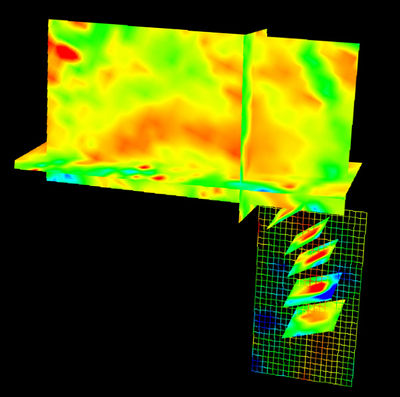Main Page



Contents
Welcome to the NIML
The Neurophysiological Imaging and Modeling Laboratory (NIML), at The University of Idaho Department of Biological Engineering, is led by Dr. Bryn Martin. Our aim is to conduct clinical translational research that enhances human health and well being for the millions of people affected by CNS disorders. We develop and apply advanced MR imaging and computational modeling techniques to investigate the pathophysiology of CNS disorders from a hydrodynamic and biomechanical perspective and develop related medical technologies.
Research team
Please click here to see members of the NIML research team. We are seeking motivated students for the fall 2015 semester and external collaborators. Please email Bryn Martin if you are interested in joining NIML.
Projects
Please click on the links below to learn more about the current, available, and past research projects at the NIML.
- Available projects for M.S. or B.S. students that we need some help with.
- Current projects that we are working on.
- Past projects that have been completed.
NIML monthly meetings
The NIML and collaborating institutions hosts a monthly meeting that anyone is invited to attend in person or by VOIP. For more information on the meeting please click here.
Backgroud


What is neurohydrodynamics?
Click here for a presentation with background information on neurohydrodynamics.
Neurohydrodynamics is a division of neural engineering that investigates the hydrodynamics of the neurological system in health and disease. It applies engineering principles and design concepts to neural engineering to help close the gap between fluid mechanics and neurosurgical and neurological medicine. Neurohydrodynamics combines fluid mechanics principles with neuroscience to help improve neurological disorder healthcare in terms of medical diagnosis, monitoring, and therapy.
Key words
Neurohydrodynamics, cerebrospinal fluid, craniospinal disorders, chiari malformation, syringomyelia, hydrocephalus, neural drug delivery, spinal cord blood flow, cerebral blood flow, cerebral perfusion and autoregulation, sleep disorders, sleep apnea, continuous positive airway pressure, computational fluid dynamics, MRI, 4DMRI and pcMRI, neuroengineering, neuroscience, biofluid mechanics, neuroscience, neuroengineering, medical technology, neuromonitoring.
Research
The NIML's research includes in vivo, in vitro, and in silico studies that are conducted closely with medical collaborators and can be divided into projects involving 1) clinical tools and measurements and 2) modeling. Figure 5 shows ongoing projects at the NMTL with the names of key collaborators. For a complete list of collaborators click here.
Clinical tools and measurements
- Intraoperative aortic graft hemodynamics
- Continuous positive airway pressure (CPAP): influence on the cardiovascular and cerebrospinal fluid system
- 4D MRI in craniospinal disorders
- 4D MRI in cerebral blood flow and cerebrospinal fluid hydrodynamics
- Cerebrospinal fluid pulse wave velocity in craniospinal disorders
Modeling
- Coupled cardiovascular and cerebrospinal fluid (CSF) system
- Hydrocephalus
- Spinal cord blood flow
- Aortic graft hemodynamics
- Cerebrospinal fluid: in vitro and computational fluid dynamics models
Publications
For a list of NMTL publications please click here.
External links
- Take a moment to visit the | Neurohydrodynamics Youtube channel to see some videos of our work.
- Click here for external links to related laboratories, conferences, and organizations.
News
| Date | Announcement |
|---|---|
| 2012-05-30 |
Dr. Martin is hired as Director of the Chiari Research Center at the University of Akron. |
| 2012-03-15 |
NMTL's Marie Curie IIF grant to host Prof. Ahmed Al-Jumaily from Aukland University of Technology at the EPFL LHTC was funded! |
| 2011-08-11 |
NMTL submitted a Marie Curie IIF grant to host Prof. Ahmed Al-Jumaily from Aukland University of Technology at the EPFL LHTC. Prof. Al-Jumaily will work with Dr. Martin to develop a new device for non-invasive treatment of obstructive sleep apnea with help from Raphael Heinzer, M.D. and Jose Haba-Rubio, M.D. at the Center for Sleep Investigation. |
| 2011-07-19 |
The 1st CSF hydrodynamics symposium was a great success! Click here for a video of Dr. Martin's talk on neurohydrodynamics, 4DMRI measurements, and in vitro modeling of CSF. |
| 2011-06-15 |
NMTL submitted a Bertarelli Foundation EPFL/Harvard collaborative research grant with neurosurgeon Joseph Madsen and Tomer Anor. |
| 2010-12-01 |
Dr. Martin featured on the Chiari and Syringomyelia Foundation's exciting new researchers, research projects and proposals. |
| 2010-10-02 |
NMTL's research grant approved by the Swiss National Science Foundation to develop a coupled hydrodynamic model of the cardiovascular and cerebrospinal fluid system! |

